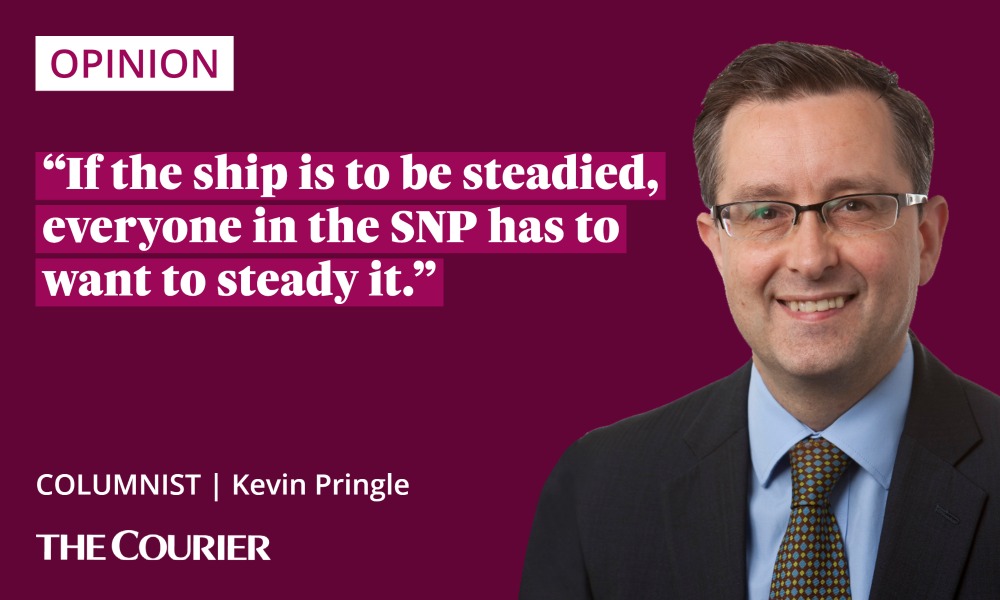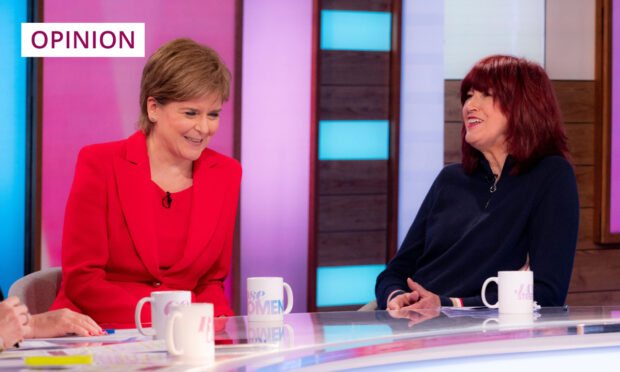To quote the SNP’s president and interim chief executive, Michael Russell: “I think it’s fair to say that there’s a tremendous mess and we have to clear it up.”
He was referring to the ordure of the party first denying and then admitting it has shed tens of thousands of members, and the spate of resignations that have accompanied the party’s leadership election.
This is exactly the frankness that is needed to address the situation, and assist a process of recovery that should begin from the moment the new leader is announced next Monday.
On ITV’s Loose Women programme, Nicola Sturgeon sought to make the fine distinction of arguing that Mr Russell “was referring to some of the issues around the leadership election. The SNP’s not in a mess. It’s going through, how can I put this, some growing pains right now.”
However, having to deny that your party is in a mess is, arguably, a manifestation in itself of being in a mess.
In any event, growing pains are a common enough experience for children, but there was nothing inevitable about the extraordinary events that have bedevilled the SNP in recent days.
While Mr Russell’s candid admission is a necessary part of rebuilding trust in the SNP among members and the wider electorate (some of which, though by no means all, has been lost), it isn’t anything like sufficient.
The SNP should undertake a deep examination into how the missteps and miscommunications came about – thus establishing how long the problems have been brewing – and be transparent with its membership and the public at large about the findings.

That approach would involve moments of short-term pain, perhaps acute, but openness will deliver much more by way of long-term gain.
The SNP also needs to demonstrate that all of its organs of state are fully functioning.
For example, the fact that the party’s membership has been declining in sizeable numbers for some time seems to have come as news to everyone in its upper echelons.
As a governance body, the SNP’s national executive committee should have been all over this issue for months. Its members should have been asking for reports about the extent of the problem, commissioning surveys to get a handle on why people are leaving, and establishing if there were ways and means of enticing them back.
Above all, if the ship is to be steadied, everyone in the SNP has to want to steady it.
Whoever wins the leadership, I hope that no one is written out of the party’s script thereafter, or writes themselves out of it because they don’t like the result.
We live in a time when growing numbers of politicians curate their personal brands on their own social media platforms, and seek to project an image of individual ideological purity (as they see it) on high-profile policy controversies. Think about the stridency of the push for self-identification in relation to gender recognition legislation, for example.
This relatively new phenomenon of the social media age can undoubtedly clash with the concept of a political party as a collective entity: a compromise, containing disparate views on certain questions among members at all levels.
The SNP – and it’s not alone in this, whether at home or abroad – needs to re-learn the political art of give and take.
The party’s current difficulties offer a major opportunity for its rivals, particularly Labour.
A lot of the SNP’s surge in support after the independence referendum came from there, and could go back again.
In my view, however, Labour will not fully capitalise on the situation. That’s because it lacks the clout in Scotland or the sense in England to offer a policy that would change the terms of politics north of the border, and significantly improve the economic prospects for the whole UK: re-entry into the single European market. That would be a substantial inducement for pro-European SNP voters to switch, but Labour won’t go there because it doesn’t suit its Westminster-based political agenda.
Europe is an illustration and a big part of the ongoing case for independence.
Among other changes, the new SNP leader should get behind the idea of a broad-based convention to take the campaign for an independent Scotland outside the buildings of the Scottish Government and party headquarters, and into the country.
Amid the abysmal headlines, there is good news for the SNP. It remains by far the largest political party in Scotland, and the only mass membership one.
More significantly, it continues to reflect the grain of public opinion. As the Scottish Social Attitudes survey revealed last October, two-thirds of people in Scotland trust the Scottish Government to work in Scotland’s best interests, compared with just 22% who trust the UK administration.
These are substantial advantages as the SNP works to build back better.











Conversation